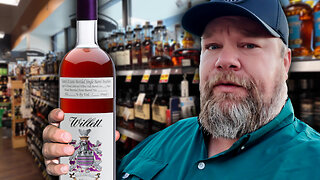Premium Only Content

The Hidden Dangers of Artificial Food Dyes: A Deep Dive into Health Impacts and Regulatory Oversight
Introduction: The Ubiquity of Artificial Food Dyes
Every year, an estimated 15 million pounds of artificial food dyes are added to the food supply in the United States. These synthetic colorings are used to enhance the visual appeal of foods, particularly those marketed toward children, such as candies, fruit snacks, and cereals. Despite their widespread use, mounting evidence suggests that artificial food dyes may pose significant health risks, particularly for children, who are more susceptible to their effects.
In this article, we will explore the history of artificial food dyes, the evidence linking them to various health issues, the regulatory landscape surrounding their use, and the steps consumers can take to minimize their exposure.
The Origins and Evolution of Food Dyes
The use of artificial colorants in food dates back to the 19th century, when the industrial revolution brought about the mass production of synthetic dyes. Initially, these dyes were derived from coal tar, a byproduct of coal processing. Over time, the chemical industry developed a wide array of synthetic dyes, many of which found their way into the food supply.
In the early 20th century, concerns about the safety of these dyes led to the passage of the Pure Food and Drug Act of 1906, which aimed to regulate the use of harmful substances in food. Despite these early regulatory efforts, many artificial dyes remained in use, and it wasn’t until later decades that more stringent regulations were implemented.
Today, artificial food dyes are primarily derived from petroleum and are regulated by the Food and Drug Administration (FDA) under the Federal Food, Drug, and Cosmetic Act. The FDA approves dyes for use in food based on safety assessments, but the agency’s standards have come under scrutiny as new research has emerged.
The Health Risks of Artificial Food Dyes
Research into the health effects of artificial food dyes has revealed a range of potential risks, particularly for children. Among the most concerning are the links between food dyes and behavioral issues, including Attention Deficit Hyperactivity Disorder (ADHD) and other behavioral disorders.
Behavioral and Cognitive Effects:
• Studies have shown that certain food dyes, particularly Red No. 40, Yellow No. 5, and Yellow No. 6, may exacerbate symptoms of ADHD in children. A landmark study conducted in 2007 by researchers in the UK found that a combination of artificial food dyes and the preservative sodium benzoate increased hyperactive behavior in children .
• The European Union (EU) has responded to such findings by requiring warning labels on foods containing these dyes, stating that they “may have an adverse effect on activity and attention in children.” However, no such warning is required in the United States, where these dyes are still widely used .
Carcinogenic Concerns:
• Red No. 3 is a dye that has been particularly controversial. In 1990, the FDA banned its use in cosmetics after studies showed that it caused cancer in lab animals. However, the dye remains approved for use in food, where it is commonly found in candies and baked goods. The FDA acknowledges that Red No. 3 is a known carcinogen, but has yet to take action to ban its use in food products .
• Other dyes, such as Yellow No. 5 and Yellow No. 6, have also been linked to cancer. Studies in lab animals have shown that these dyes can cause tumors in the adrenal glands and kidneys .
Allergic Reactions and Inflammation:
• Artificial food dyes can also trigger allergic reactions and contribute to chronic inflammation. Yellow No. 5, in particular, has been associated with allergic responses such as hives and asthma. Inflammation, often driven by dietary factors, is a key underlying cause of many chronic diseases, including cardiovascular disease and diabetes .
Regulatory Oversight and Industry Influence
The regulation of artificial food dyes in the United States falls under the purview of the FDA, which has historically taken a conservative approach to banning or restricting these substances. While the FDA does require testing for safety before approving a dye for use, the standards for what constitutes “safe” are often based on outdated research and fail to account for cumulative exposure or vulnerable populations, such as children.
One of the major challenges in regulating food dyes is the powerful influence of the food industry. Food manufacturers rely on artificial dyes to make their products more appealing, particularly to children, who are naturally attracted to brightly colored foods. As a result, there is significant industry resistance to banning or restricting these dyes, despite the growing body of evidence suggesting their potential harms.
In contrast to the United States, the EU has taken a more precautionary approach. The requirement for warning labels on foods containing certain dyes has led many European food manufacturers to reformulate their products using natural colorants, such as beet juice or turmeric, instead of synthetic dyes.
What Can Consumers Do?
Given the potential health risks associated with artificial food dyes, it is advisable for consumers to take steps to minimize their exposure. Here are some practical strategies:
1. Read Labels: The most effective way to avoid artificial food dyes is to read ingredient labels carefully. Look for the specific names of the dyes (e.g., Red No. 40, Yellow No. 5) and choose products that use natural colorants instead.
2. Choose Whole Foods: Whole foods such as fruits, vegetables, grains, and lean proteins are free from artificial additives, including dyes. Focusing on a diet rich in these foods can reduce exposure to potentially harmful substances.
3. Advocate for Change: Consumers can also play a role in advocating for stricter regulations on artificial food dyes. This can include supporting organizations that work to improve food safety standards and contacting elected officials to express concerns about the use of synthetic dyes in food.
4. Opt for Organic: Organic foods are free from synthetic additives, including artificial dyes. While organic products can be more expensive, they offer a safer alternative for those looking to avoid these chemicals.
Conclusion: A Call for Greater Awareness and Action
The widespread use of artificial food dyes, particularly in products marketed toward children, presents a significant public health concern. While research continues to shed light on the potential risks associated with these substances, regulatory bodies like the FDA have been slow to respond with meaningful action.
As consumers, it is crucial to remain informed about what we are putting into our bodies and to demand greater transparency and accountability from both food manufacturers and regulators. By choosing products free from artificial dyes and advocating for stricter regulations, we can help protect our health and the health of future generations.
Additional Information and Insights
Alternatives to Artificial Dyes:
• There are numerous natural alternatives to artificial food dyes, including beet juice (for red), turmeric (for yellow), and spirulina (for blue). These natural colorants not only provide vibrant hues but also offer additional health benefits, such as antioxidant properties.
Cumulative Effects:
• It is important to consider the cumulative effects of exposure to artificial food dyes, particularly for children who may consume multiple products containing these dyes on a daily basis. The long-term impact of chronic exposure remains an area of active research, highlighting the need for precautionary measures.
Educational Resources:
• Parents and educators can access a variety of resources to learn more about the risks of artificial food dyes and how to make healthier food choices. Organizations such as the Center for Science in the Public Interest (CSPI) offer detailed reports and guides on this topic.
By increasing awareness and making informed choices, we can collectively reduce the burden of artificial food dyes on public health and encourage a shift toward safer, more natural food products.
-
 29:53
29:53
MYLUNCHBREAK CHANNEL PAGE
1 day agoUnder The Necropolis - Pt 1
111K45 -
 2:00:10
2:00:10
Bare Knuckle Fighting Championship
3 days agoCountdown to BKFC on DAZN HOLLYWOOD & FREE LIVE FIGHTS!
47.4K3 -
 2:53:01
2:53:01
Jewels Jones Live ®
1 day agoA MAGA-NIFICENT YEAR | A Political Rendezvous - Ep. 103
121K31 -
 29:54
29:54
Michael Franzese
14 hours agoCan Trump accomplish everything he promised? Piers Morgan Article Breakdown
117K49 -
 2:08:19
2:08:19
Tactical Advisor
18 hours agoThe Vault Room Podcast 006 | Farwell 2024 New Plans for 2025
187K11 -
 34:12
34:12
inspirePlay
1 day ago $5.65 earned🏆 The Grid Championship 2024 – Cass Meyer vs. Kelly Rudney | Epic Battle for Long Drive Glory!
87.2K8 -
 17:50
17:50
BlackDiamondGunsandGear
15 hours ago $2.98 earnedTeach Me How to Build an AR-15
61.4K6 -
 9:11
9:11
Space Ice
1 day agoFatman - Greatest Santa Claus Fighting Hitmen Movie Of Mel Gibson's Career - Best Movie Ever
119K48 -
 42:38
42:38
Brewzle
1 day agoI Spent Too Much Money Bourbon Hunting In Kentucky
80.6K13 -
 1:15:30
1:15:30
World Nomac
1 day agoMY FIRST DAY BACK in Manila Philippines 🇵🇭
62.6K9